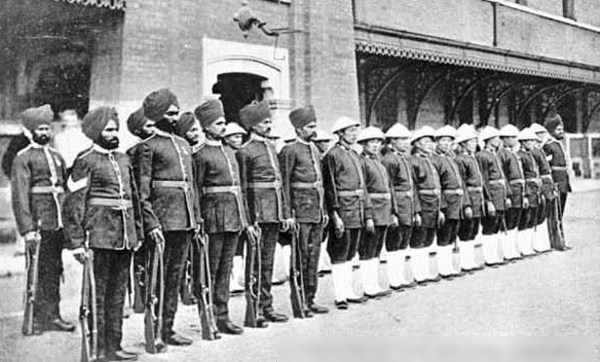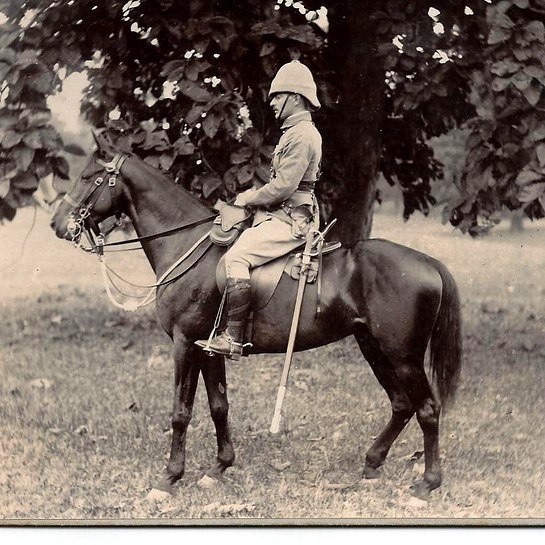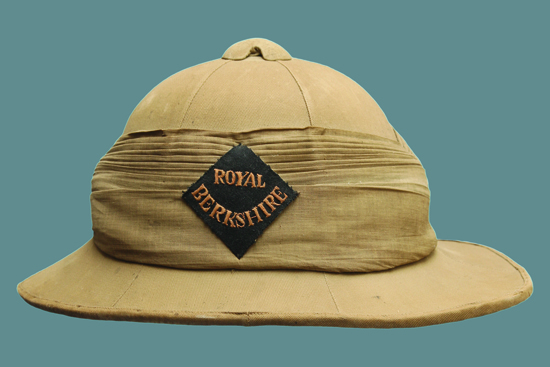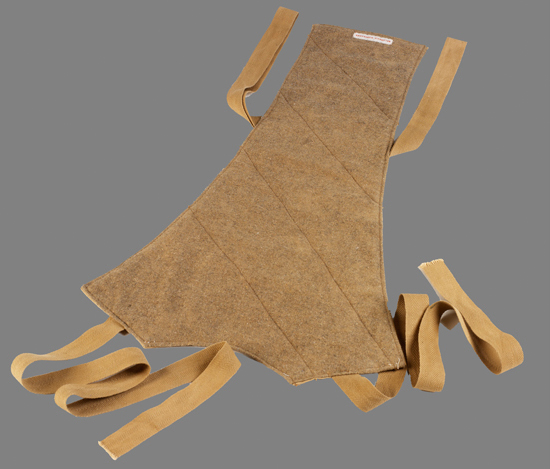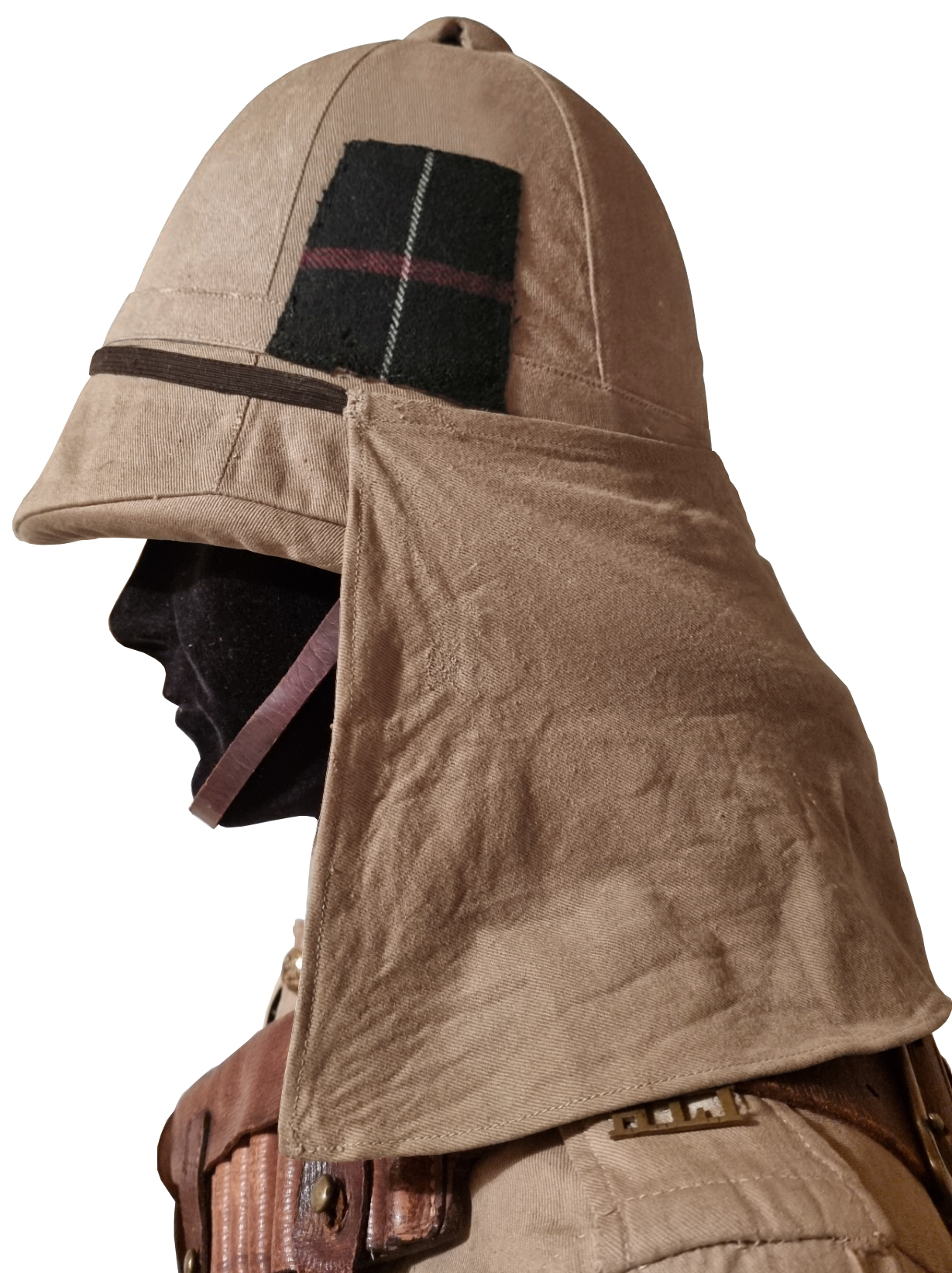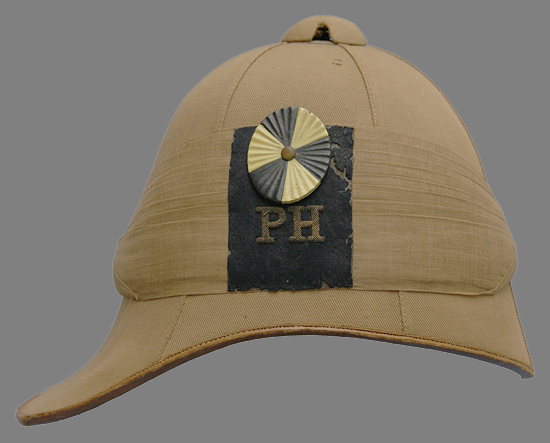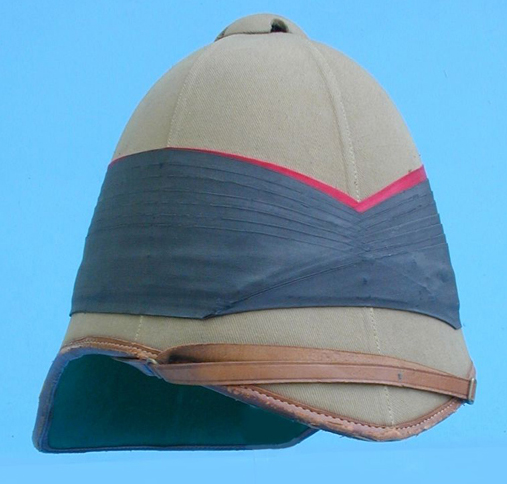
This Colonial Pattern helmet, of the 49th Ottawa-Carleton Rifles, illustrates the most common form of the puggaree with two folds: front and rear. (Collection of Clive M. Law)
The puggaree (or pagri, pugri etc.) was an addition to the headgear of the British soldier primarily being for protection against sword cuts but also protection from the heat of the sun. Just how effective it was in this latter use is debatable. In its many forms it was also a decorative item and was additionally used to distinguish regiments and corps. The cloth wrapped around the crown of the helmet was most commonly folded over in two places: at the front and the rear. However, examples of the puggaree being folded in three, four and six positions are known to have existed. In this article the six seams of the helmet cover are equated to positions on a clock face with 12 o’clock being the rear seam and 6 o’clock being the front seam etc. Continue reading

